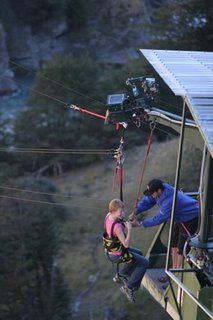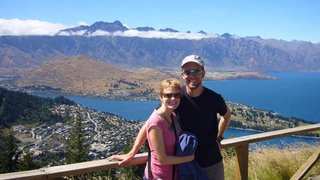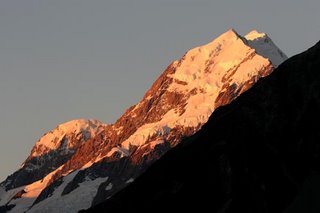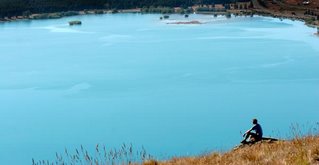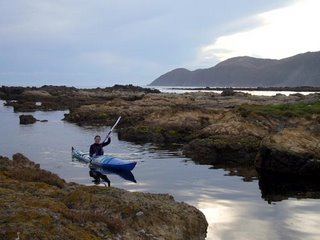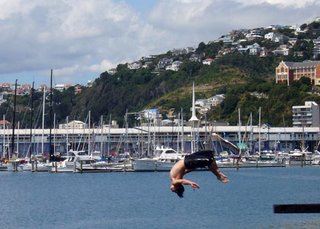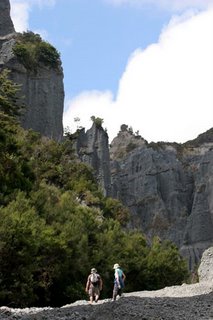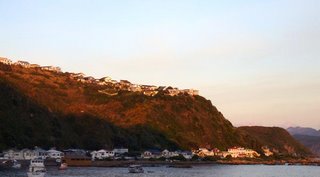Doubtful Sound
The Doubtful Sound is much larger than the Milford Sound but it is harder to access. No people live in the area and there are few roads. We had decided to do a two day kayaking trip to the Sound, so we could experience somewhere more remote. There were eight of us including the guide and his friend. It took us a few hours to get to the Sound, crossing Lake Manapouri and then on another road before we got to the Sound. After giving us the opportunity to practise paddling in our seakayaks, with the great help from Ben-our guide, we started our adventure. There are three distinct arms in the Sound. We headed up Halls Arm. Problems can occur on the Sound, due to few places to stop and dramatic weather changes. I think this was probably the safest place for us amateurs to kayak. The water in the Sound is unusual in that it contains two distinct layers of water that do not mix. The top few meters is fresh water, fed from the high inflows from the surrounding mountains. Below this is a layer of cold, heavy, saline water from the sea. Twice a day the tide flows out of the Sound into the Tasman Sea. We kayaked for five hours. It was amazing to be somewhere so remote and quiet. It rained for much of the day, which created a mist across the water-very mysterious. The rain allowed us to see the Doubtful Sound at one of its best-the rainforest looked lush and there were many waterfalls. That night we camped on the Sound in a small inlet beside a stream. Before setting off the next morning we were lucky enough to see one of the most southernmost pods of bottlenosed dolphins. As we set of kayaking, we followed these dolphins, watching them swim gracefully and jump! We kayaked for a few hours and very reluctantly returned back to Deep Cove to begin our journey back to Te Anau( where we were all staying)There is a hydroelectric power station at the Cove, which was built in the Sixties. It discharges water( used to run the turbines ) and research is currently going on to see what damage it may be causing. It was the building of this power station which caused the New Zealanders to become more active in protecting their environment. Despite the power station, once we got further into the Sound, it gave us the opportunity to experience a place that is relatively untouched-a difficult task nowadays.
We had an amazing time-highlight of the trip so far. The group we were with were great and a big thanks to Ben, our guide, who showed us this stunning and magical place. If you want to find out more about the Sounds and some of the research going on with the dolphins, go to www.wikipedia.org and type in the relevant key words. You will now discover where I get most of my facts!

Kayaking on the Sound

Rebecca kayaking

Stephen kayaking-do you like our hats?

One of the many beautiful reflections in the Sound

Camp-loads of sandflies so an insect tent was a necessity! I am still itching as I write this...

Wind was up so we got to sail.

View of the Doubtful Sound from the only accessible road.





